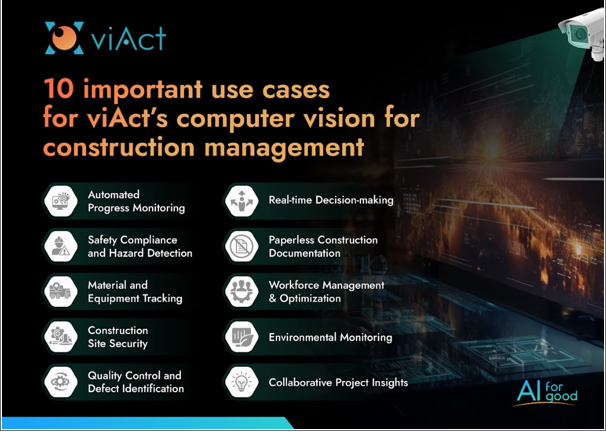In this speed-up construction industry, safety at the workplace is the paramount concern. With the daily incidence of fatal and nonfatal accidents around the world, it has raised the stakes for better safety measures. Here comes the SSSS (Smart Site Safety System), an innovative system that employs AI, IoT, and video analytics that leads to the emergence of a safe site on any under-construction site.
In this article, we will be engaging in a more detailed view of what SSSS Construction is, why it is important, and how it is making an impact in the management of workplace safety.
Understanding SSSS Construction
SSSS Construction is another name for the Smart Site Safety System, and this is an advanced AI-powered system that aims to bring more safety, fewer accidents, and a more secure work environment in construction sites. The system utilizes AI, video analytics, and IoT in continuous monitoring of job sites, identification of potential hazards, and generating real-time alerts. A comprehensive AI-powered safety solution, SSSS ensures that accident chances are greatly minimized and that secure working conditions are available to all working individuals.
SSSS Construction is more than just watching over workplace safety measures as it can boast of more varieties such as digitized permits, powered tools tracking, and monitoring personal protective equipment, among others, which have alerts for unsafe acts or dangerous situations. This can build technology into traditional techniques for proactive management of risks ensuring timely interventions and accident prevention before it happens.
Key Features of SSSS Construction
SSSS Construction brings together a range of smart features to establish proactive safety monitoring. Some of its most prominent features include:
● Centralized Management Platform (CMP): viHUB’s centralized platform offers a way for stakeholders to monitor and manage site safety performance. AI cameras and IoT devices collect data and generate insights that can be reviewed and acted upon immediately.
● Digitalized Permit-to-Work (PTW): The system automates the process of applying, issuing, and tracking work permits. This online solution ensures that permits are always up to date, minimizing risks associated with expired or unverified permissions.
● Real-Time PPE Detection: SSSS Construction uses video analytics to monitor compliance with personal protective equipment (PPE) regulations. The system can detect instances of non-compliance, allowing site managers to take corrective actions before accidents occur.
● Danger Zone Access Control: The AI-powered navigation system detects unauthorized access to restricted areas. If a worker enters a danger zone, such as a lifting zone or area with electrical fencing, the system immediately sends an alert.
● Confined Space Monitoring: The viMOV device tracks atmospheric changes and alerts site managers about dangerous conditions in confined spaces, such as high temperatures or poor air quality.
● Virtual Reality (VR) Safety Training: Captured data can be utilized to create VR-based safety training programs. Workers can experience high-risk situations virtually, which helps them better prepare for real-life scenarios.
Industries Benefiting from SSSS Construction
SSSS Construction is not bound to construction sites. Its AI-based features can be easily fitted and applied in various industries where safety ranks topmost. Some of the industries include:
● Oil & Gas: SSSS is a much-needed answer to risk minimization in hazardous environments that comprise combustible materials and highly volatile equipment in constant use.
● Manufacturing: In large factories having complicated machinery, SSSS ensures that laborers are protected and that the operational safety of the establishment is maintained.
● Mining: Inherently dangerous activities associated with cave-ins, poor quality conditions of air, and heavy machinery make mining highly amenable to such a real-time hazard detection system.
● Smart Cities:In urban development, monitoring the safety of large-scale projects like skyscrapers, bridges, and tunnels are highly inclined with SSSS.
Conclusion
The future of workplace safety will be achieved with the use of an AI-powered solution that prevents accidents and enhances productivity in working operations at SSSS. Features such as a centralized management platform, real-time tracking, and digitized permit systems ensure that SSSS Construction provides a holistic approach to safety management and improvement of overall safety in risky industries.
Such a company as SSSS Construction brings a sense to construction firms that goes beyond the mandatory procedures and investment in the well-being of the employees and ultimately in the success of the projects. By embracing this technology, a firm can dramatically reduce mortality at the workplace, increase transparent processes, and develop a safety culture that addresses the physical and psychosocial well-being of its workforce.
The well-integrated smart safety system distinguishes it as an essential resource for the construction and high-risk industries of today.
Visit Our Social Media Details :-
Facebook :- viactai
Linkedin :- viactai
Twitter :-aiviact
Youtube :-@viactai
Instagram :-viactai/
Blog Url :-
Computer Vision for PPE Compliance: A New Era of Workplace Safety
Boosting Workplace Safety: Forklift and Pedestrian Monitoring with Computer Vision







